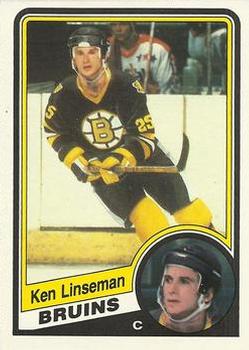Hockey Card Stories: True Tales from Your Favourite Players
This book is a must read for any hockey card aficionado, especially if you long for the old days when O-Pee-Chee was the dominate, and sometimes only, brand. The author, Sportsnet's Ken Reid, picked out 61 cards from his personal collection and then called up 59 players on those cards to see what they thought of them. The book is divided up into ten chapters, with each chapter featuring five to six players. Each player's story lasts 4-6 pages.
The cards range from 1971 to 1991 - all O-Pee-Chee. There is a solid range of players, from HHOFers, such as Tony Esposito and Bobby Orr, to one game wonder, Bill Armstrong. Player's reactions of their cards range between pride, to indifference. Although most, especially the guys with the 1970s cards, expressed embarrassment over their photos.
 |
| An example from the WHA chapter |
The book read like a bunch of short articles, or blog posts. In fact, some of the stories were previously published online a few years ago. Check them out if you want a sampling of what is in the book. Most stories are directly relates to the card pictures, but a few seem to use the card more of a jumping off point to cover the player more in general.
One of the more interesting stories was the 1984-85 OPC Ken Linseman. I alwasy knew it was an obvious airbrush job, but there is more to it than that. It's Linseman's head, but not his body. I will let you google it, or go out and buy the book to learn more.
This was a very interesting book to read but it left me wanting more. I have always wondered what players thought about their cards and what type of cards or memorabilia collections they might have. Perhaps there will be a sequel. I do hope so.
I definitely recommend this book to any true hockey card fan. There are no stories about game-used jersey or serial numbered cards, so perhaps not a great buy for anyone who has never ate gum from a pack of cards. It has a $19.95 cover price but, as always, can be had for cheaper online. Let's finish with a word from Ken Reid himself.
One of the more interesting stories was the 1984-85 OPC Ken Linseman. I alwasy knew it was an obvious airbrush job, but there is more to it than that. It's Linseman's head, but not his body. I will let you google it, or go out and buy the book to learn more.
 |
| The FrankenCard. |
This was a very interesting book to read but it left me wanting more. I have always wondered what players thought about their cards and what type of cards or memorabilia collections they might have. Perhaps there will be a sequel. I do hope so.
I definitely recommend this book to any true hockey card fan. There are no stories about game-used jersey or serial numbered cards, so perhaps not a great buy for anyone who has never ate gum from a pack of cards. It has a $19.95 cover price but, as always, can be had for cheaper online. Let's finish with a word from Ken Reid himself.


